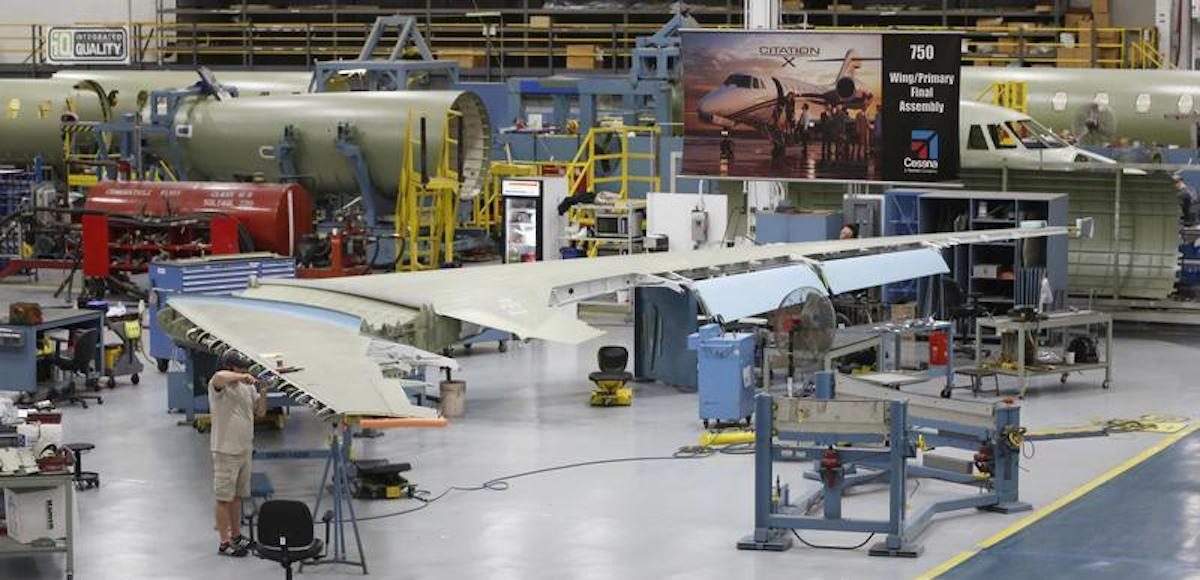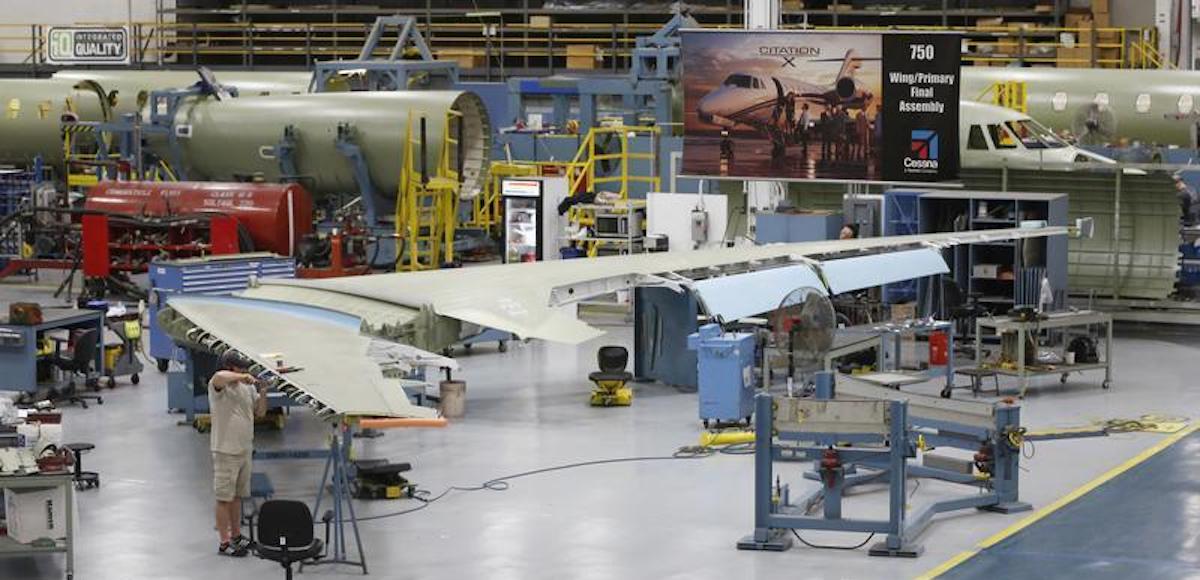

Nathan Rogers works on the jet assembly line at Cessna, at their manufacturing plant in Wichita, Kansas March 12, 2013. (Photo: Reuters)
The Kansas City Federal Reserve said Tenth District manufacturing activity continued to rise despite impact on the region from hurricanes. While delivery times slowed significantly in September, it is likely to be temporary.
The month-over-month composite index — an average of the production, new orders, employment, supplier delivery time, and raw materials inventory indexes — came in at 17 in September, up from 16 in August and 10 in July.
“Factories in the region reported another good month in September, with little impact overall from the Gulf Coast hurricanes,” Chad Wilkerson, vice president and economist at the Kansas City Federal Reserve said.
Factory activity saw solid gains at both durable and non-durable goods plants — particularly for chemicals, plastics, and machinery products — though month-over-month indexes were somewhat mixed.
The production index remained strong and unchanged, while the shipments, employment, and new orders for exports indexes marginally increased. New orders fell from 25 to 10, and the order backlog index also declined. But they may pick back up as demand for replacement for equipment and vehicles damaged by Harvey hits next month.
The finished goods inventory index declined from 2 to -6, while the raw materials inventory index was laregly unchanged.
Year-over-year factory indexes increased juxtaposed to the previous month. The composite index soared from 23 to 35. The production, shipments, new orders, and order backlog indexes also rose significantly. The employment index rose from 22 to 30, while the capital expenditures index edged higher.
The raw materials inventory index slipped from 18 to 16, and the finished goods inventory index eased from 6 to 2. Expectations for future factory activity were mostly stable at high levels. The future composite index inched higher from 23 to 26, and the future order backlog and new orders for exports indexes also increased slightly.
The future production, shipments, and employment indexes were all unchanged, while the future new orders index dropped from 39 to 27. The future capital expenditures index scaled back from 18 to 13 after rising in August.
The future raw materials inventory index soared from -2 to 19, while the future finished goods inventory index also moved back into positive territory. In fact, most price indexes increased in September, which is a welcome sign of price traction not present in previous months.
The month-over-month finished goods price index increased from 8 to 13 and the raw materials price index also ticked higher. The year-over-year finished goods price index shot up from 29 to 38 and the year-over-year raw materials price index increased modestly. The future raw materials price index was unchanged, while the future finished goods price index slowed from 34 to 29.






